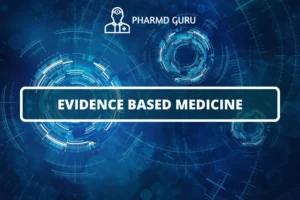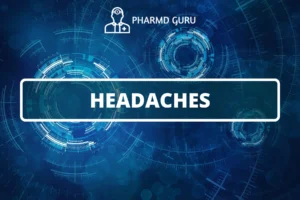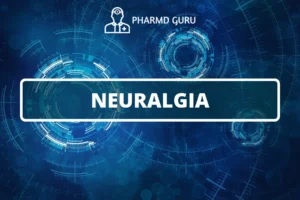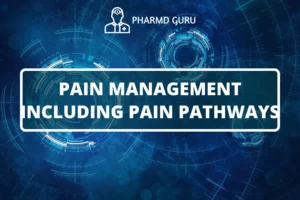Alzheimer’s disease is a progressive neurodegenerative disorder that primarily affects memory, thinking, and behavior. It is the most common form of dementia, accounting for a significant proportion of dementia cases. In this article, we will explore the etiopathogenesis of Alzheimer’s disease, including its underlying mechanisms, and discuss the pharmacotherapy options used in its treatment.
SCROLL DOWN TO THE BOTTOM OF THIS PAGE FOR ACTUAL NOTES.
Table of Contents
- Introduction
- Understanding Alzheimer’s Disease
- Etiology of Alzheimer’s Disease
- Pathophysiology of Alzheimer’s Disease
- Clinical Features and Diagnosis
- Treatment Options
- Pharmacotherapy for Alzheimer’s Disease
- Non-Pharmacological Approaches
1. Introduction
Alzheimer’s disease is a complex and devastating condition that significantly impacts individuals and their families. Understanding the etiopathogenesis, or the underlying causes and mechanisms, of Alzheimer’s disease is essential for early diagnosis, effective management, and potential future interventions.
2. Understanding Alzheimer’s Disease
Alzheimer’s disease is characterized by the progressive impairment of cognitive functions, primarily affecting memory, thinking, and behavior. It is a chronic and irreversible condition that worsens over time. The exact cause of Alzheimer’s disease is not fully understood, but it involves a combination of genetic, environmental, and lifestyle factors.
3. Etiology of Alzheimer’s Disease
The etiology of Alzheimer’s disease is complex and multifactorial. Several factors are known to contribute to the development of the disease:
- Age: Advancing age is the most significant risk factor for Alzheimer’s disease. The risk increases substantially after the age of 65.
- Genetics: Certain genetic mutations, such as those in the genes for amyloid precursor protein (APP), presenilin 1 (PSEN1), and presenilin 2 (PSEN2), have been linked to familial forms of Alzheimer’s disease. However, these mutations account for a small percentage of cases.
- Family history: Having a family history of Alzheimer’s disease increases the risk of developing the condition.
- Apolipoprotein E (APOE) gene: Variations in the APOE gene, particularly the APOE ε4 allele, are associated with an increased risk of late-onset Alzheimer’s disease.
- Lifestyle factors: Certain lifestyle choices, such as physical inactivity, poor diet, smoking, and limited mental and social engagement, may contribute to the development of Alzheimer’s disease.
4. Pathophysiology of Alzheimer’s Disease
The pathophysiology of Alzheimer’s disease involves the accumulation of abnormal protein deposits in the brain, leading to neuronal damage and dysfunction. The two hallmark abnormalities in Alzheimer’s disease are:
- Amyloid plaques: These are clumps of beta-amyloid protein that accumulate between neurons, disrupting their communication and triggering inflammation.
- Neurofibrillary tangles: These are twisted fibers of tau protein that form inside neurons, leading to the disintegration of their internal support structure.
These protein abnormalities contribute to the progressive loss of neurons and synapses, primarily affecting brain regions involved in memory and cognition, such as the hippocampus and cerebral cortex.
5. Clinical Features and Diagnosis
Alzheimer’s disease is characterized by a gradual onset and progression of cognitive decline. Common symptoms include:
- Memory loss, especially recent memories
- Difficulty in problem-solving and planning
- Confusion and disorientation, particularly regarding time and place
- Language difficulties, such as finding words or understanding conversations
- Impaired judgment and decision-making
- Changes in mood, personality, and behavior
Diagnosing Alzheimer’s disease involves a comprehensive assessment, including medical history, cognitive tests, neurological examination, and brain imaging (e.g., MRI or PET scans). It is essential to differentiate Alzheimer’s disease from other forms of dementia and identify potential underlying causes or contributing factors.
6. Treatment Options
Currently, there is no cure for Alzheimer’s disease. However, various treatment options aim to manage symptoms, slow disease progression, and improve the quality of life for individuals with the condition. Treatment approaches involve a combination of pharmacotherapy, non-pharmacological interventions, and supportive care.
7. Pharmacotherapy for Alzheimer’s Disease
Pharmacotherapy plays a crucial role in the management of Alzheimer’s disease. Medications approved for the treatment of Alzheimer’s disease include:
- Cholinesterase inhibitors: Drugs such as donepezil, rivastigmine, and galantamine work by increasing the levels of acetylcholine, a neurotransmitter involved in memory and cognition. These medications may temporarily improve cognitive function and reduce certain symptoms.
- N-methyl-D-aspartate (NMDA) receptor antagonist: Memantine is an NMDA receptor antagonist that helps regulate glutamate activity, which is involved in learning and memory processes. It may be prescribed to individuals with moderate to severe Alzheimer’s disease.
The choice of medication depends on various factors, including the stage of the disease, individual response, and potential side effects. These medications may help manage symptoms but do not stop or reverse the underlying disease process.
8. Non-Pharmacological Approaches
In addition to medication, non-pharmacological approaches can complement the management of Alzheimer’s disease. These may include:
- Cognitive stimulation: Engaging in mentally stimulating activities, such as puzzles, reading, or social interactions, may help maintain cognitive function.
- Physical exercise: Regular physical exercise has been associated with potential cognitive benefits and overall well-being.
- Nutritional support: A healthy and balanced diet, rich in fruits, vegetables, whole grains, lean proteins, and omega-3 fatty acids, may support brain health.
- Social engagement: Maintaining social connections and participating in social activities can help improve mood and quality of life.
ACTUAL NOTES:




